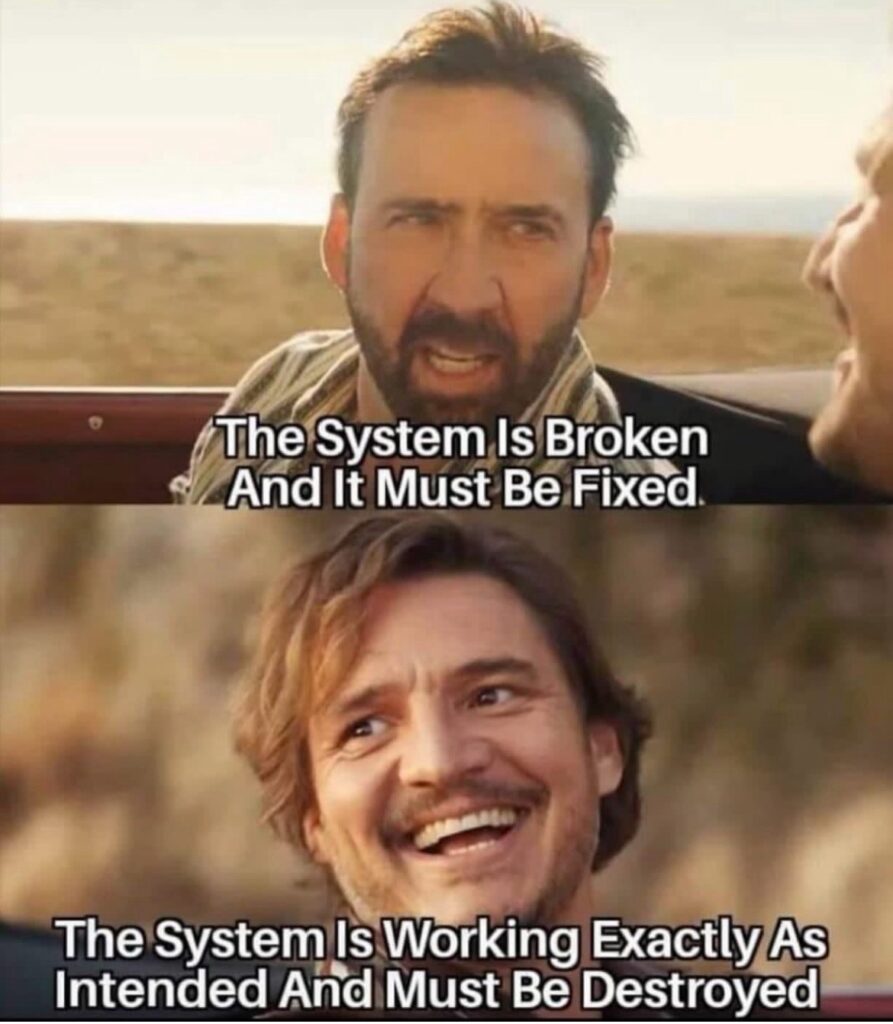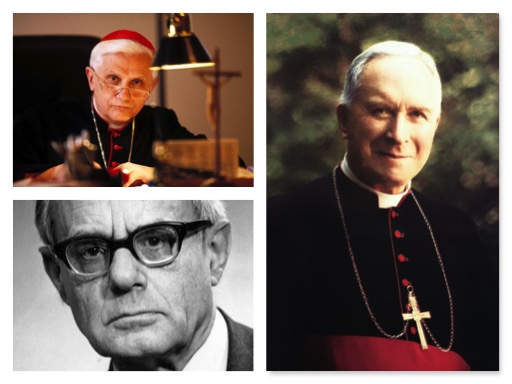I wish there were not divisions in Christianity, but there are. I wish there were not any divisions in Catholicism, but there are. In this article, I’m going to show the roots of the three factions of Western Catholicism as found in recent Church history. This is not to further divide, but so that readers may better understand the motivations of such groups. It’s also to teach the first group listed below how to better evangelize the other three groups.
Traditional Catholics are those I usually label Apostolic Catholics because their roots in both doctrine and liturgy go back historically to what Jesus Christ gave to the Apostles. This group was nearly wiped out by “the changes” to doctrine and liturgy that took place in the 1960s. However, tradition was salvaged at a great cost by a few bishops, priests and laymen. Foremost in this group was Archbishop Marcel Lefebvre (in picture above, the man to the right.) From him sprung not only the SSPX, but even the canonically-regular traditionalist communities (who are not infrequently ashamed to mention his name for reasons of self-preservation.) This group has a powerful voice online, but liturgically makes up only 1% of the world’s Catholics. (Doctrinally-speaking, this group might be as high as 5% of the world’s Catholics.)
Communio Catholics are those I usually call “neo-con non-trads” on this blog. In Europe and the United States, these are Catholics who overlap with traditionalists on social issues (eg. no abortion, no “alternative marriages, etc.) but prefer a reverent Novus Ordo Missae (Mass of Pope Paul VI published around the time of Vatican II.) The then-Fr. Ratzinger (later Pope Benedict XVI, top left picture) formed a theological group called Communio in 1972 with his friends Hans Urs von Balthasar, Henri de Lubac, Joseph Ratzinger, and Louis Bouyer. They broke off from the more progressive Concilium (founded by themselves and Karl Rahner and others before that.) The goal of Ratzinger’s Communio was to promote the “hermeneutic of continuity,” his lifetime project of reconciling pre-and-post Conciliar doctrine and liturgy. The torch of this project was picked up by people like Fr. Joseph Fessio SJ at Ignatius Press.
Concilium Catholics are those I usually call “leftist Catholics” on this blog. Concilium was founded by Fr. Karl Rahner (in picture above, the bottom left.) The left-leaning University of Notre Dame’s Life Journal reads: “Concilium was a theological journal founded in 1965 by Karl Rahner, Johannes Baptist Metz, Anton van den Boogaard, Paul Brand, Marie-Dominique Chenu, Edward Schillebeeckx, Yves Congar, and Hans Küng. This journal was/is intent on propagating the aggiornamento spirit of Vatican II.” Most social-justice warriors claiming to be in the Catholic Church adhere to this group.
Close to Ignatius Press is the Catholic World Report which reads: “Fifty years ago, Hans Urs von Balthasar, Henri de Lubac, and Joseph Ratzinger, among others, founded the theological journal Communio, which set out, as Balthasar put it, to ‘fight at all costs against the deadly polarization brought on by the fervor displayed by traditionalists and modernists alike’ and ‘to perceive of the Church as a central communion, a community that originated from communion with Christ, who presented himself as a gift to the Church; as a communion that will enable us to share our hearts, thoughts, and blessings.’”
Notice that even friends of Ignatius Press admit that Cardinal Ratzinger and Communio decided “to fight at all costs against the deadly polarization brought on by the fervor displayed by traditionalists and modernists alike.” Again, this is called the “hermeneutic of continuity.” However, after 10 years of the Vatican apparatus being run by those sympathetic to a Concilium view of theology and sacraments, a significant number of those people once-loyal to the Communio group (including myself) have gone to tradition. The current Vatican has made it clear there is no more room for the “hermeneutic of continuity.”
Recently, there was a conference in Montana called Trad Recovery with the subtitle “Catholics in Communion Conference.” It was supposed to be a conference for people who have been wounded in traditional Catholicism and have since found their way out (but want to remain Catholic.) They are much more in line with Communio (neo-con) than Concilium (liberal.) But many of the traditionalists who mocked the recent conference acted like leaving traditional Catholicism was tantamount to removing your brown scapular and grabbing a guitar and playing Kum ba yah. Here’s the thing: I guarantee none of the people at Trad Recovery in Montana played Kum ba yah between sessions. I bet most of the speakers and the attendants (if there were any) had on brown scapulars. In fact, the priest who hosted it is seen on the website for that conference wearing his black cassock. (I went to seminary with him and he’s not a bad guy.)
Trad Recovery may even have a point on a few issues, as I know some traditionalists who have been harmed spiritually by rigorous or controlling priests as I explained here.
Still, I will never leave traditional Catholicism. Traditional Catholics believe simply that Christ delivered the Faith and sacraments once-for-all (with small additions—never subtractions—allowed through time) to the Holy Apostles. God the Holy Spirit inspired these words in the Bible: “For I the Lord do not change.”—Mal 3:6. Thus, God’s Divine Revelation does not change even on small issues. Neither do His sacraments, at least not substantially. To justify a full overhauling of the Catholic Church (like Concilium) or to put the breaks on the destruction of the Church (like Communio) is something no saint would ever do. Certainly not a saint of a Church crisis like St. Athanasius. Yes, we must “return to the sources” (ressourcement as the French Communio folks labeled it) but now I insist: Let’s return to all the sources, all the Church Fathers—not just their favorites like Origin.
The main reason I point out that the “Trad Recovery folks” are not ultra-leftists is so that traditionalists might stop talking to neo-cons like they’re leftists and leftists like they’re neo-cons. They’re both wrong to reject tradition, but they do it for very different reasons. If we want to win them “to the fullness of the truth” (yes, I am purposely using a term they use towards Protestants) then we must evangelize them in a more astute manner, knowing their strengths and weaknesses from the inside-out. As St. Ignatius of Loyola said about sharing the faith: “Go into their door to bring them out yours.”
Again, I am sorry there are such divisions in the Church. But I still believe both non-traditional factions of Western Catholics are wrong in their approach to somehow defending the devastating changes of the 1960s, and this will have major ramifications for the eternal outcomes on souls. My only practical instruction here is that the traditionalist (aka Apostolic Catholic) sharing the ancient traditions with Communio neo-cons may look a little different than sharing the basics of the Gospel with the Concilium leftists. Of course, charity is required for both.

Neo-cons on top. Trads on bottom.
